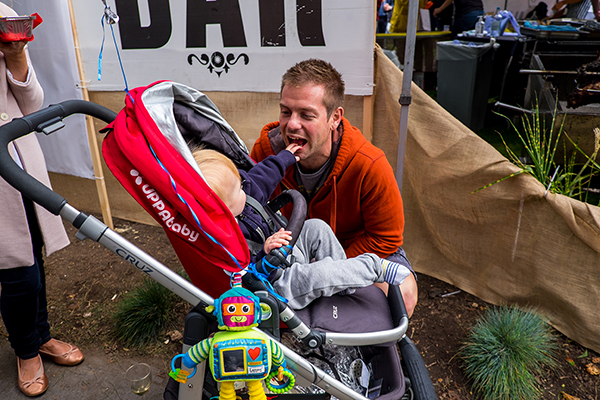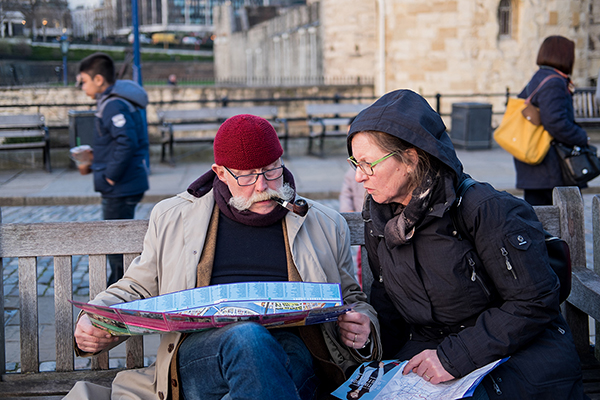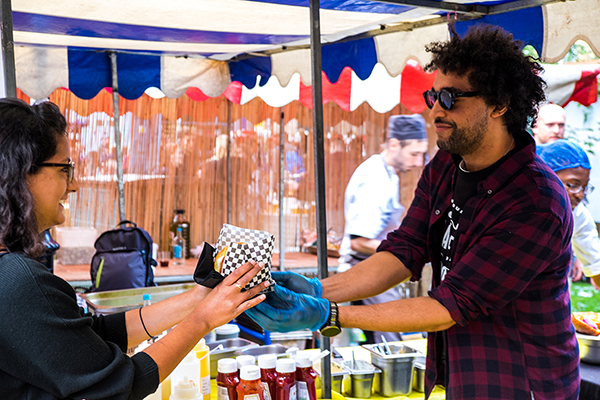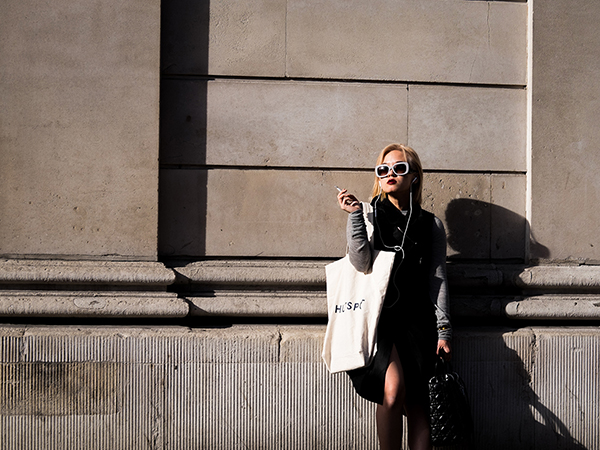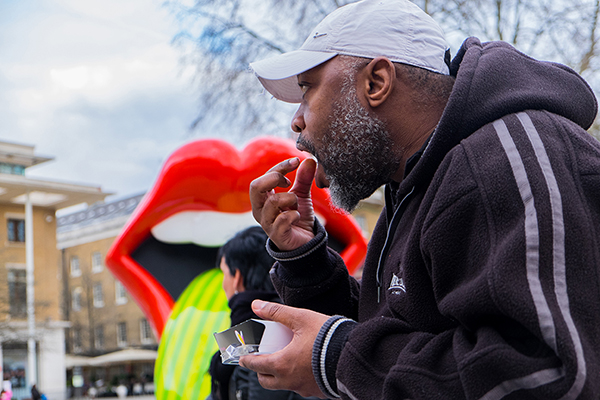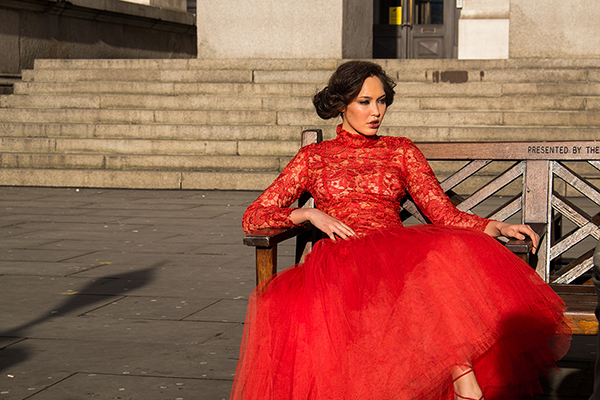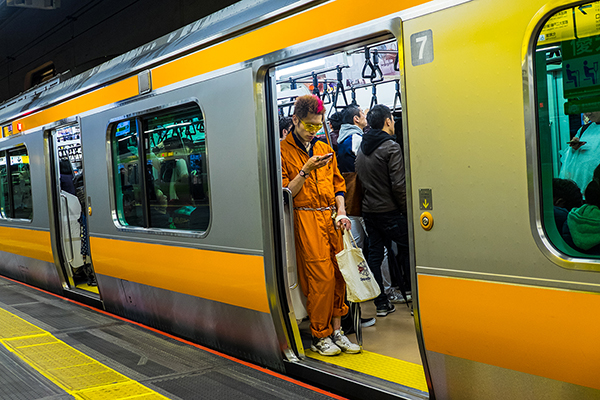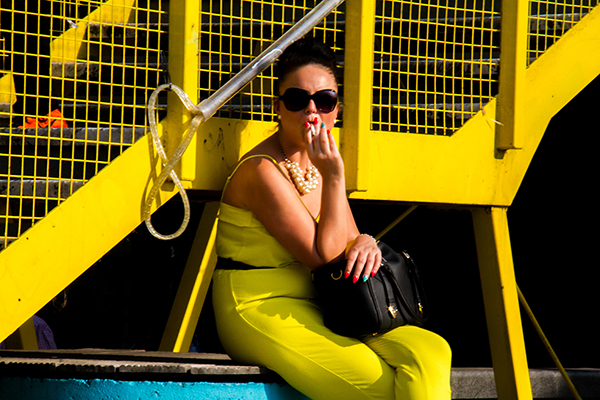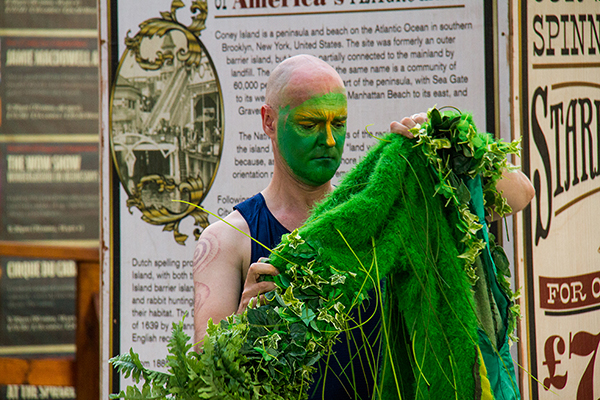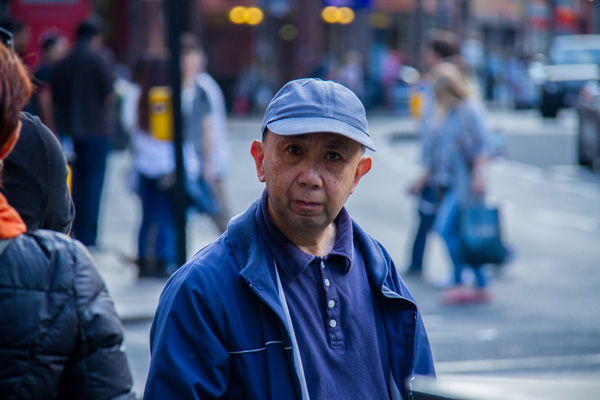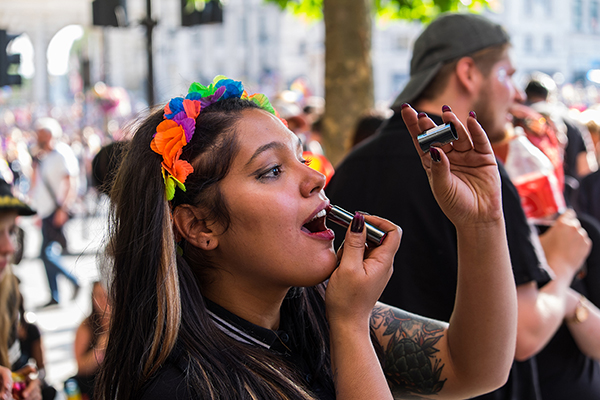Street Photography is one of the most challenging types of photography to master. It’s technically challenging and it can be a little scary at first.
In this tutorial you’ll discover 10 tips to face your fears and help you confidently and creatively get great results from your street photography.
1. Know The Law Where You Are
One fear that you may have is that someone will confront you for taking their picture. You may even be worried that this could lead to criminal or civil legal issues.
Knowing the law about taking pictures in public where you are, gives you peace of mind before you’ve even encountered that kind of situation. Forewarned is forearmed.
The internet is a great resource for finding information about the law. There are many photography forums with discussion boards, but the best way to get started is to search the term “street photography legal” along with the country you’re in. Read widely as some sources may contradict others.
In the US and UK, you’re legally free to take pictures of anything or anyone in public. Private land, property or secure facilities are subject to different rules and you would need permission to photograph these sites or use the photographs in certain ways. Some organizations post their restrictions on their websites, so they can be a great source of information.
In France, where they have strict privacy laws, you’re limited as to what you can photograph. Know the local customs and laws, and you should be fine.
If there are restrictions in your country on taking pictures in public, make sure you follow them to keep yourself safe from arrest or lawsuit. If the law allows you to take pictures in public, you can rest safe in the knowledge that the law has your back and that any threat to involve police should come to nothing.
2. Avoid Drawing Attention To Yourself
To capture truly candid moments you need to be invisible… a fly on the wall. As a street photographer, you’ll want to blend in with the environment as best you can. Wear dark or neutral colored clothing to minimize how much you stand out in a crowd.
Naturally, you’ll be looking around for something to shoot, such as an interesting character or people interacting with their environment. Try not to make eye contact with your subjects as this can give away the fact that you’re planning to take their photo. Sometimes playing the role of tourist can provide a good disguise to shoot with abandon in well-known areas.
In less traveled spots, a good trick is to pretend that you’re shooting something directly behind your subject. If they’re already coming towards you, keep shooting after they pass by – as if you were unconcerned by them and only the imaginary subject that was behind them. They’ll normally be none the wiser.
Your camera can be a beacon that marks you out to people in an urban environment. If you have a large zoom lens, people tend to notice you straight away. A small prime lens will not only improve your street photography by getting you closer to your subject, but it’ll also help you be more inconspicuous.
DSLR cameras tend to be more noticeable due to the size of their bodies and also the loud “clack” that their mechanical shutters make. Mirrorless, Micro 3/4 and point-and-shoot cameras sometimes have an electronic shutter option which makes them virtually or completely silent. In addition to their smaller sizes, this can really help you remain anonymous when shooting.
Another way to keep your camera off the radar is to swap out the branded strap for a plain, dark colored one. This can help avoid any subject noticing your camera and has the added bonus of making your camera less obvious to any potential thieves. Some photographers even use a small strip of black tape to cover the logos on their camera bodies.
3. Shoot From The Hip
Shooting from the hip is a great way of taking street photos if you’re not yet confident enough to shoot through the viewfinder at eye level. This is especially effective if your camera has a tilting screen on the back.
Simply hold the camera at hip level, or wherever the strap ends, compose the shot on the tilting screen and press the shutter when you see a moment. Even without the tilting screen, it can be interesting to see the images you create from this viewpoint.
Many pro photographers still find this a good method to capture shots, as it’s a different perspective from eye level shots and can provide interesting results.
4. Use Aperture Priority Mode
For street photography, set your camera to Aperture Priority mode. This will give you the best creative control over the depth of field. Depth of field is how much of the image is in focus. A shallow depth of field means very little of the image is in focus, from front to back. A large depth of field means most of the image is in focus. To achieve a shallow depth of field choose an aperture with a low f/number – e.g. f/4 rather than f/16. When you take control of what is in focus you also take control of what isn’t in focus. A really out-of-focus or blurred background can really help your subject stand out. This is perfect for street photography where distracting backgrounds are common.
Remember that sometimes you may want to include the background in sharp focus to help create context or help tell a story. In these situations choose a smaller aperture (larger f/number – e.g. f/8 rather than f/2.8). As you make the aperture smaller the camera will compensate by making the shutter speed slower – to allow sufficient light to be captured for a good exposure. The downside of this is that faster moving elements within the scene may appear blurred. This could be a problem if the subject also appears blurred.
When the shutter speed is too slow, compensate for this by choosing a higher ISO value, e.g. 400 rather than 100. ISO is the camera’s adjustable sensitivity to light. An increased ISO value allows the camera to use a faster shutter speed, which reduces the chances of blur from motion or unsteady hands.
5. Choose Your Shooting Distance
It’s common to be afraid of getting really close to your subjects. Initially, you might be more comfortable shooting from a distance. That’s completely okay. Allow yourself some space to feel out your surroundings. You can still get great shots from a distance, and if you want to focus on one subject in particular, you can crop later when editing.
As you gain confidence in yourself, you’ll probably find that you’re stepping closer into the action without making a conscious choice. When you’re in the thick of things you can really feel the buzz and energy of the world around you, and this is when it starts to get really fun.
6. Wait For Your Moment
Every street photographer has at one point or another felt overwhelmed with the choice of subjects in front of them. Fear of missing a great shot can create a sense of anxiety that will come across in the resulting photos. They might be poorly composed or the subject may be hard to discern.
A great way to overcome this is to choose a single spot to anchor yourself in. Some photographers choose a wall to lean against, others pick a spot on the sidewalk to sit. Your choice of spot is down to you. It could be somewhere that offers an interesting background. Or a busy thoroughfare chosen to pull the most people past you.
Keep your camera pointing in one direction and let your subjects come to you. Don’t worry about any other shot you could be missing. By giving your shots a focal point independent of the subjects you’ll draw a narrative to the shots you create.
Don’t be afraid to experiment with different backdrops and locations. Even quieter locations can have their charm, though the footfall might mean you need to be patient. These photos can often be the most rewarding.
7. Don’t Go It Alone
Most street photographers prefer shooting alone. There’s a greater sense of freedom and being in your own headspace can spark creativity. But bringing a friend along with you can inject an aspect of fun and camaraderie. And that interaction with a friend can detract from the attention you get from your subjects.
Not only can it help beginners feel less intrusive, but it can also add a competitive edge. If you’re both shooting, showing each other your shots can encourage a healthy competitiveness between you. And that can push you both to take risks with your photos to achieve greater results.
If you don’t have any friends you want to take, you can join a local photography group. Sites like “Meet Up” have many different groups and you can search Instagram for Instagrammers in your area.
Join forums and Facebook groups too. Not going it alone isn’t just a tip for when you’re shooting – you should always talk to other photographers. You can pick up loads of tips and make new friends.
8. Talk To People
The biggest fear that most people face when doing street photography is the fear of being confronted. And while it’s true that very occasionally you’ll meet people who are unhappy at having their photo taken, there are things you can do to de-escalate most encounters.
The easiest of all is by smiling. It’s funny how a smile can disarm most negative reactions. This simple acknowledgment of another human being goes a long way to defuse all but the most upset subjects.
Have a backstory prepared to explain why you’re taking street shots. Say that you’re a photography student, you’re trying a different style of photography, or that you’re documenting the place you’re in. Be honest and forthcoming as to your reasons.
When someone shows interest in what you’re doing, offer to show them your images. If the images are of your subject, offer to email them a copy if they like it. It’s amazing how many random conversations you can have from these interactions.
Have a few cards made up with a link to your Instagram or website to give to people. You’ll appear more serious to others and it will get your images seen by more people. You never know who they might show them to and what might result from it.
9. Put Away Your Own Preconceptions
Photographers, in general, feel more comfortable behind the lens than in front of it. This can subconsciously feed our fear of taking pictures of strangers. Our anticipation of a negative reaction can create a mental block.
However, “selfie” culture and the increasing use of CCTV means that people in the street are becoming more comfortable with being caught on camera. While this doesn’t mean everyone will always be happy to be your subject, knowing that very few people will be unhappy about it can help reduce the fear you face.
People in public are often busy. Far from being upset that you’re photographing them, they may not even notice your presence. This frame of mind can really help you overcome any hesitation you feel.
Street Photography: Conclusion
Your fear of street photography is unfounded and based on your own preconceptions about how people will react. You can minimise your fears by continuing to go out and shoot. The more you shoot the more you’ll realize people are too wrapped up in their own world to notice you taking their photo.
By following the tips in this tutorial you can suppress any fears you have and your shots will improve exponentially. Stop worrying what other people think and you’ll be able to concentrate on making the images you want to capture. The ratio between fear and fun will change and you’ll become more confident and considered with your images.
Finally, remember to smile and wear comfortable shoes!



